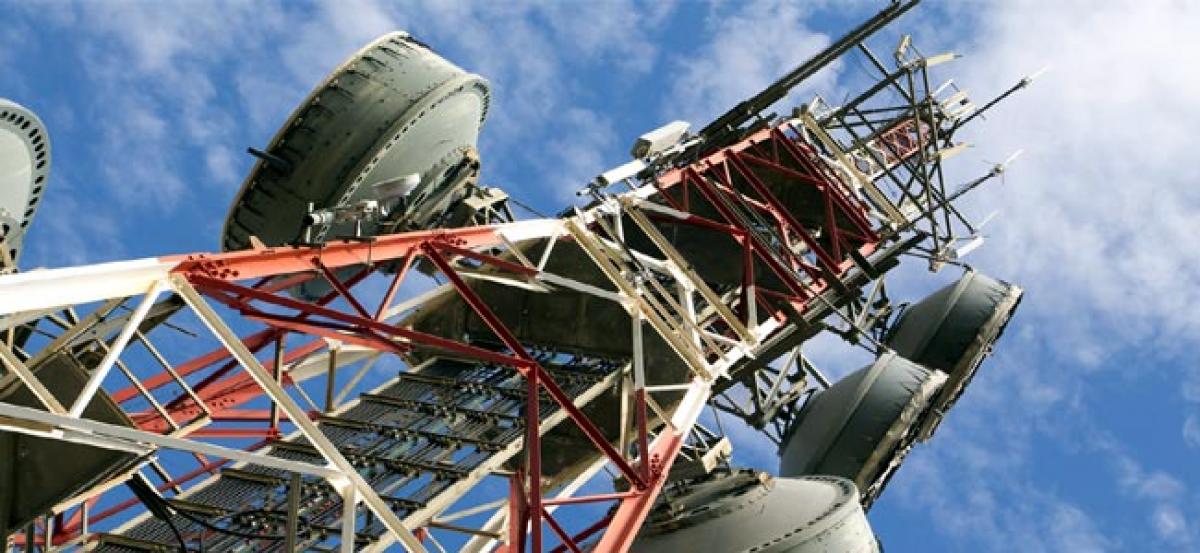Live
- India Urges $1.3 Trillion Annual Climate Support for Developing Nations
- Bad air: 106 shuttle buses, 60 extra Metro trips planned to make Delhiites give up cars
- WHO reports declining monkeypox cases in Congo
- CM Attends Kotideepotsavam on Kartika Purnima
- PKL Season 11: Raiding trio of Devank, Ayan, Sandeep help Patna Pirates rout Bengal Warriorz
- Food waste crisis fuels sustainable practices across APAC food & beverage industry: Report
- AI helps erase racist deed restrictions in California
- ATMIS completes third phase of troops' drawdown in Somalia
- PM Kisan Samman Nidhi scheme bringing smile to Nalanda farmers
- German economy forecast to lag eurozone growth until 2026
Just In

Crashing data tariffs, free voice calls, disruptive entry of Reliance Jio and a no-holds-barred turf war to safeguard Rs 9 lakh crore worth
New Delhi: Crashing data tariffs, free voice calls, disruptive entry of Reliance Jio and a no-holds-barred turf war to safeguard Rs 9 lakh crore worth of cumulative investments have set the tone for an action-packed 2017 for the telecom sector, which also had to grapple with the thorny issue of call drops this year.
If anything, the high-voltage narrative of 2016 has left mobile subscribers craving for more in the coming year, both in terms of tariffs which have touched new lows, and technology. 4G has boosted mobile speeds to levels never experienced before by the data-hungry Indians.
“About Rs 927,000 crore have been invested so far by telecom service providers (TSPs) in building world-class telecom infrastructure,” said industry body COAI’s Director-General Rajan S Mathews.
Incumbent telecom operators in representations throughout the year have shared how their revenues have taken a hit on various accounts ranging from Trai’s decision to bar differential tariff platforms like Facebook’s Free Basics, Airtel Zero, to Reliance Jio unveiling free services.
Deloitte Haskins & Sells LLP Partner Hemant Joshi, however, said that the prohibition on discriminatory tariffs has played a significant role to make data services affordable and accessible by everyone and is one of the important factors behind the rising adoption of data services in India. The telecom regulator’s latest recommendation to allow third-party platforms to provide free data without bias towards a particular telecom operator or internet content is likely to rekindle the debate on net neutrality in 2017.
Looking back, the going year started-off with a setback-of-sorts for consumers when the Supreme Court quashed penalty provision for call drops, prompting the regulator to seek more powers to penalise errant telecom operators. The Telecom Department and the regulator launched a combined offensive – in the form of review meetings and drive tests – to ensure that service quality issues remain at the forefront all through the year.
The year saw India overtaking US to become the world’s second-largest smartphone market with an installed base of 275 million devices. It has also predicted that 4G connections will grow to 280 million by 2020. According to global mobile industry body GSMA, India will add 330 million unique subscribers by 2020 (from 616 million unique users as of June 2016). In addition, the industry is set to invest heavily, with operator capex growing to $34 billion between 2016 and 2020, says GSMA.
The data and voice charges are likely to see further fall in 2017 as Bharti Airtel, Vodafone and Idea Cellular and the new entrant Reliance Jio slug it out to capture a larger chunk of what is now the world’s second-largest mobile market.
“2016 ushered in bundled voice and data integrated plans. Increasingly, this is going to be the norm in 2017, with more innovative and segmented packages in the offering. Headline mobile data tariffs have largely remained stable, but operators have increased data allowance significantly,” said EY Global Telecommunications Leader Prashant Singhal.

© 2024 Hyderabad Media House Limited/The Hans India. All rights reserved. Powered by hocalwire.com







